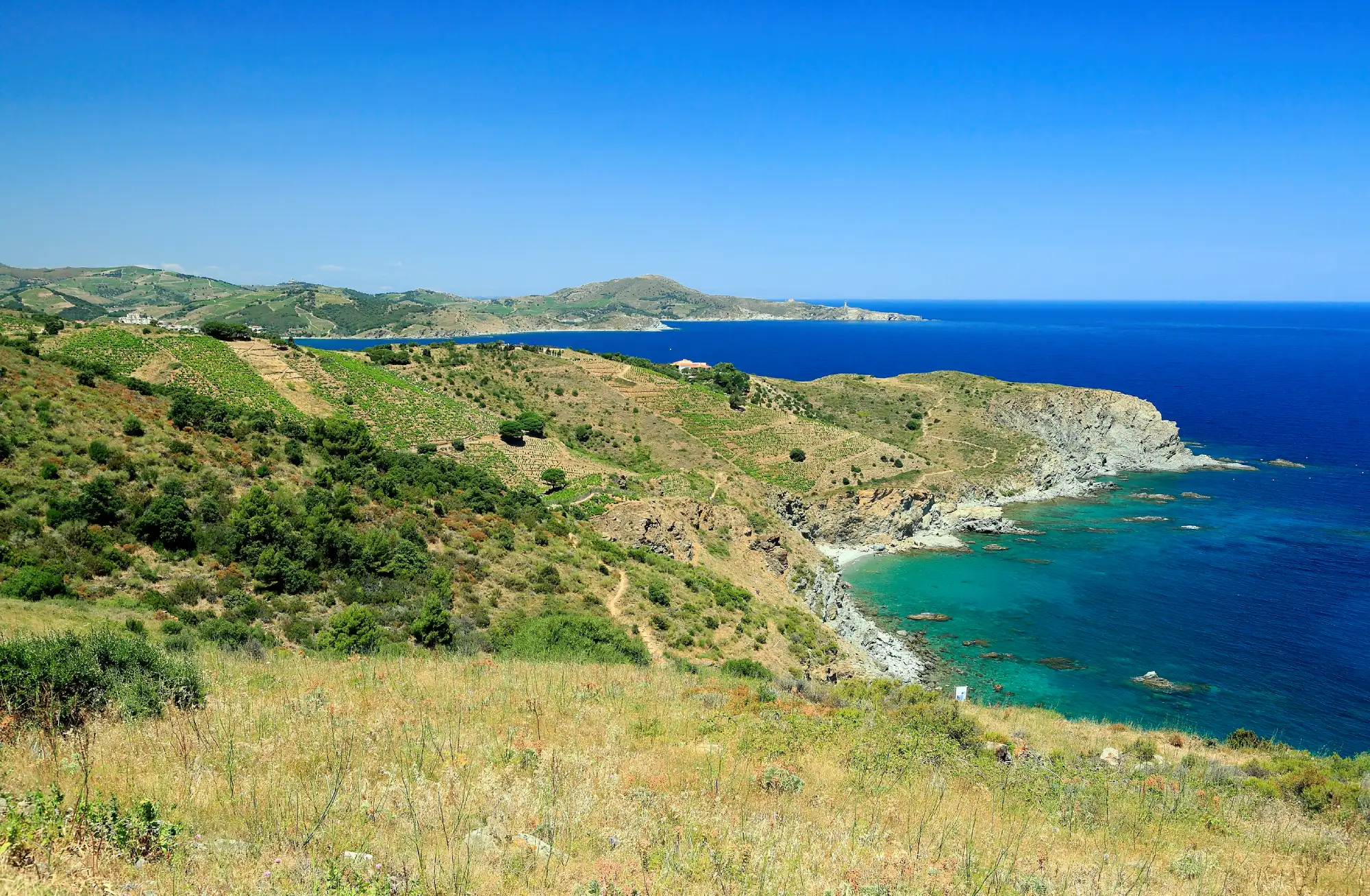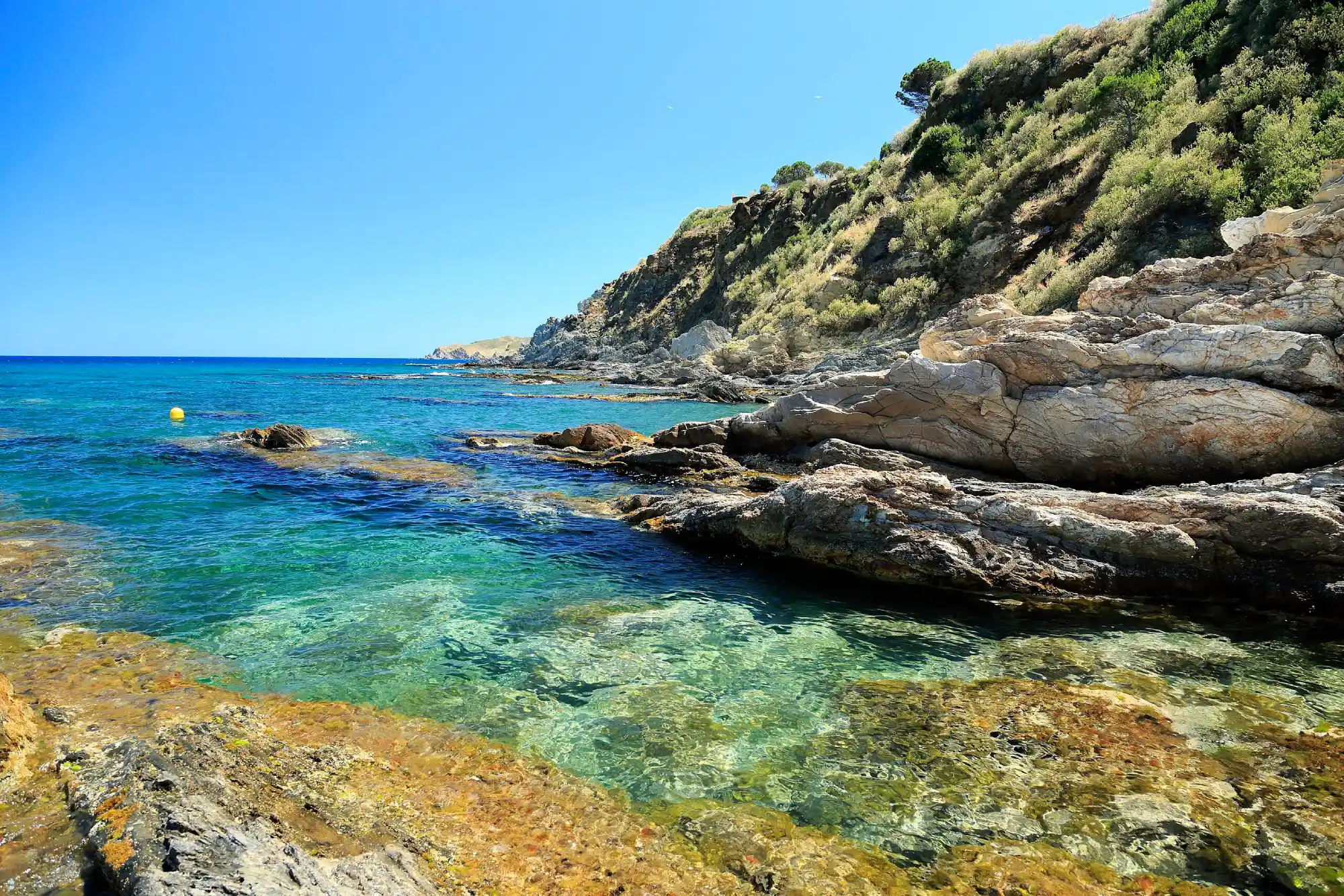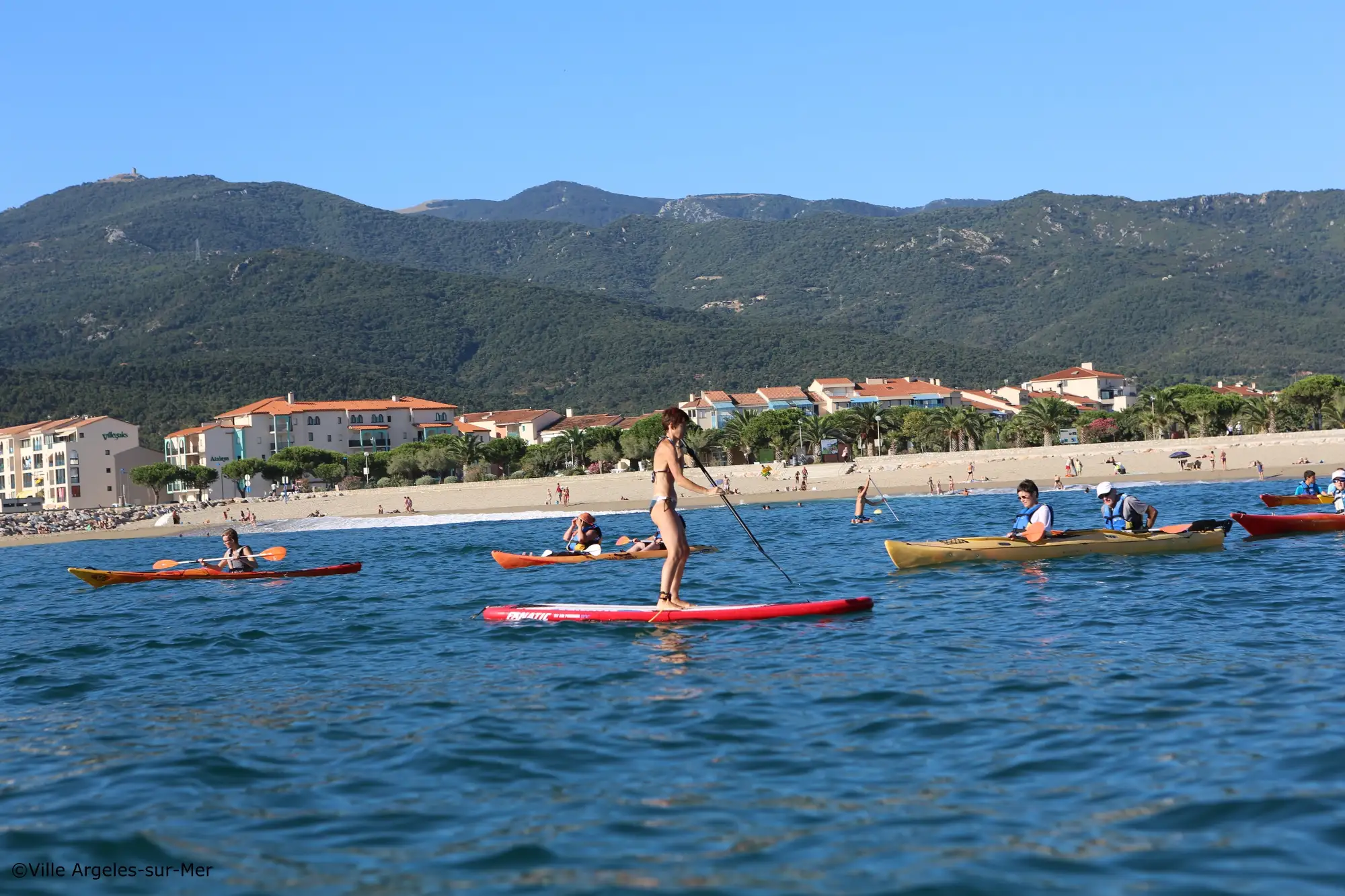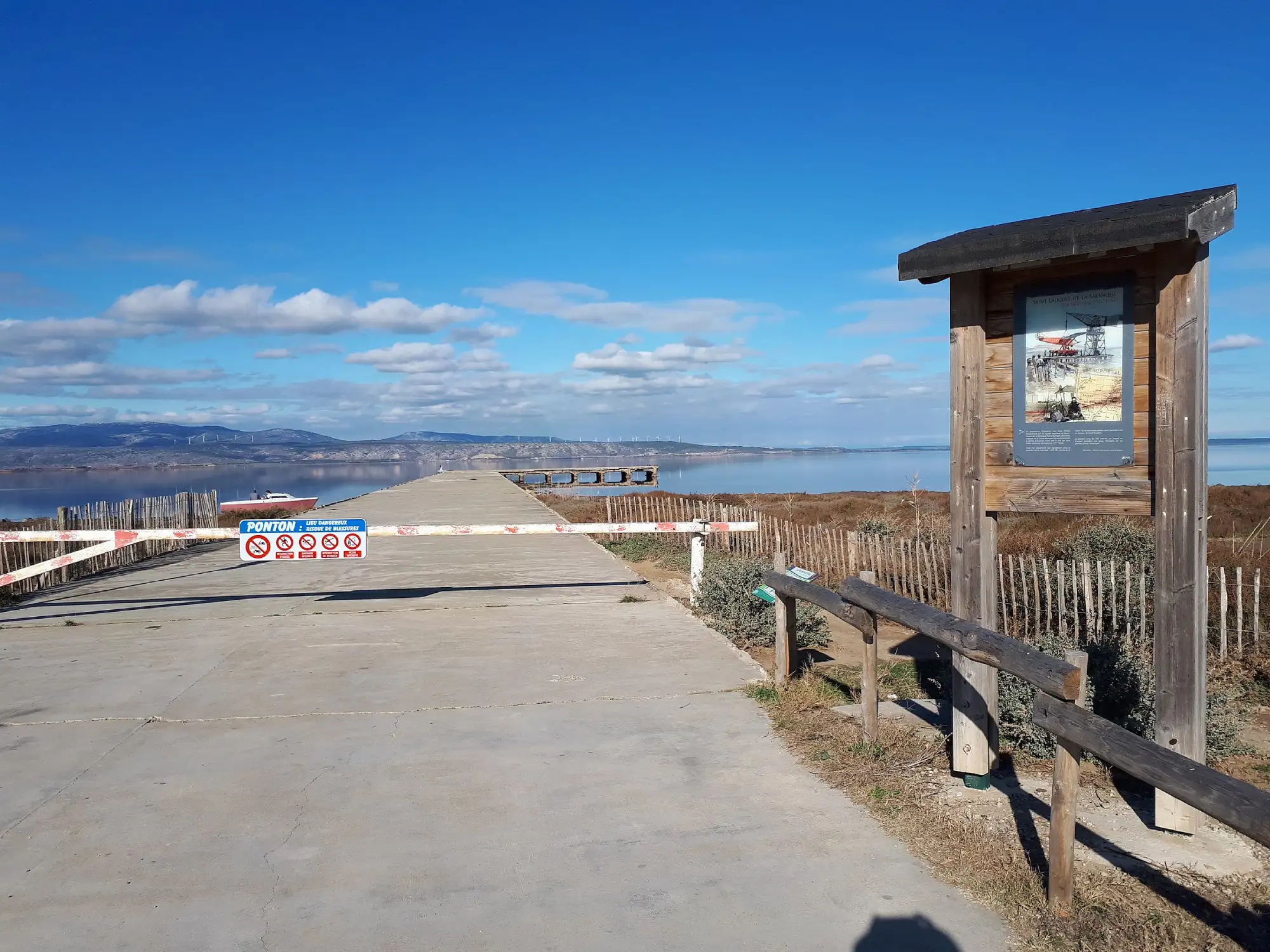The Vermeille Coast
le Bois Fleuri offers camping vacations in Argelès-sur-Mer, the gateway to the Vermeille Coast, opening onto a paradise of rocky coves, steep cliffs and secret beaches. Renowned the world over for the beauty and richness of its seabed, the Vermeille Coast is a feast for the eyes, from the last beaches of Argelès to the Spanish border.

Where is the Vermeille Coast?
After the sandy coastline of the northern Pyrénées-Orientales, the Vermeille Coast forms the coastline of the Albères massif: it begins south of Argelès-sur-Mer, past the Racou beach, and extends as far as Port-Bou, on the French-Spanish border. The Costa Brava is just around the corner. Characterized by its rocky landscape and steep slopes, it is the meeting point of the Pyrenees mountains and the Mediterranean Sea. Listed as a UNESCO World Heritage Site, it is home to exceptional natural sites and a rich historical heritage. The Vermeille Coast includes the towns and ports of Collioure, Port-Vendres, Banyuls and Cerbère. It is signaled to sailors by the lighthouses of Cap Béar and Cap Cerbère. Renowned for the variety of its landscapes, from the last beaches of Argelès all the way to Spain, the Vermeille Coast offers a diversity of scenery, colors and luminosity that have seduced and inspired renowned artists.
What to visit on the Vermeille Coast
- Collioure: a postcard landscape for this pearl of the Vermeille Coast. This former anchovy fishing village is home to a sublime medieval royal castle, from which you can admire a sublime panorama of the Bay of Collioure. The Cité des Peintres is forever linked to the Fauvist movement and its leader Matisse. The bell tower of Notre-Dame-des-Anges, an ancient medieval lighthouse with a cupola, is part of the city’s unique decor.
- Banyuls-sur-Mer: the birthplace of artist Aristide Maillol, Banyuls is even more famous for its sweet wines. Don’t miss a stroll around the port and old quarters with their colorful facades, a visit to the Maillol metairie and a visit to the Biodiversarium, a Mediterranean garden and aquarium.
- Le cellier des Dominicains: a cooperative cellar created before the 1930s in a former religious building belonging to a Dominican convent. An opportunity to taste the sweet wine of Banyuls in a prestigious historic setting.
- L’anse de Paulilles: a classified and protected natural area, comprising a terrestrial part with a typical Albères forest, and an underwater part with a vast meadow rich in biodiversity.
- Port-Vendres: a picturesque, typically Catalan town on the Vermeille Coast. Don’t miss a stroll along the quays of its fishing and yachting harbor and a visit to its Iberian-style church.
- Cap Béar: an exceptional site on the Vermeille coast, accessible from Port-Vendres. The cape is home to one of the coast’s two lighthouses. At the foot of the cliff, accessible only by water, the smugglers’ cave is the stuff of legend. The smugglers’ trail runs along the rocky coast from the cape to the bay of Paulilles.
- Cap Rédéris: a unique site from which to admire a sublime panorama embracing Cap Cerbère and Cap Peyrefite, as far south as the Spanish coast and as far north as the Audoise coast.
- Madeloc Tower: a 13thᵉ century watchtower overlooking the bay of Collioure, on the heights of the city of painters. Built under the kings of Majorca, it offers a unique view of the Albères massif and the Mediterranean Sea from its 650-meter altitude. The view extends as far as Argelès, Banyuls and Port-Vendres.
- Cerbère: the last French town before Spain, Cerbère nestles in a narrow cove. Its charming little port contrasts with the imposing and unusual railway station, partly designed by Gustave Eiffel. Don’t miss the panoramic view of the Costa Brava from the solar-powered lighthouse on Cap Cerbère. The marine nature reserve extends as far as Banyuls. Cerbère is home to the most famous diving centers. Cerbère’s coastline also boasts a well-developed underwater trail, allowing you to discover several marine ecosystems by snorkeling.
- Sorède: famous for its ancestral manufacture of riding crops and whips, Sorède still has an artisan workshop open to visitors. Sorède is also home to the Valley of the Turtles, a zoological park that’s great for families to explore.



